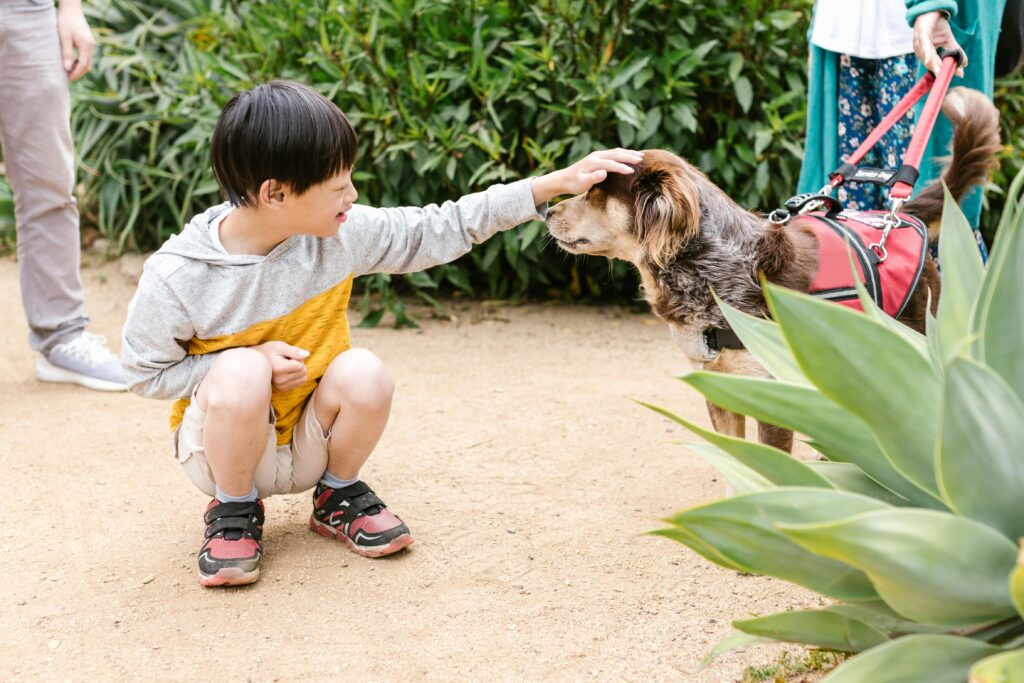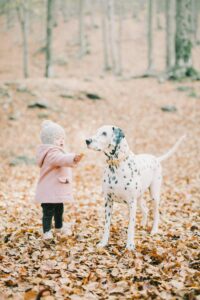Back-to-School Doesn’t Just Affect the Kids
As summer winds down and routines start shifting again, many families are focused on preparing their children for the return to school. But what about the dog? For families with young kids and canine companions, the back-to-school season can create new challenges, and opportunities, for training and bonding.
Whether you’ve got a toddler racing around the house or a teenager juggling activities, the key to harmony lies in building structure, consistency, and engagement for everyone, including your pup. At Off Leash K9 Training Columbus, we help families establish the right habits and boundaries to support safe and successful relationships between dogs and children.
Why Family Dog Training Matters
Training your dog in a family environment requires a slightly different strategy than training a dog in a single-adult household. Why? Because dogs thrive on clear, consistent signals, and children often communicate differently, with higher energy and less predictability.
A well-trained dog not only enhances your family’s daily life but also protects your children from accidents, anxiety, and even potential bites. In fact, the American Veterinary Medical Association explains that more than half of all reported dog bite victims are children, most often due to miscommunication or lack of supervision. That makes early training and education critical in family homes.
Top Training Tips for Families With Kids and Dogs
Here are essential strategies every family can use to build a healthy and happy home for both two-legged and four-legged members:
1. Establish Clear Household Rules
Dogs do best when the expectations are consistent. Set household guidelines that everyone can follow:
- Is your dog allowed on furniture?
- Can they jump on people?
- Who is responsible for feeding, potty breaks, or walking?
Write these down on a whiteboard or fridge chart to keep everyone on the same page.
2. Teach Kids How to Interact Respectfully
Young children often see dogs as living stuffed animals, but your pup may not appreciate being hugged tightly or chased. Teach kids:
- Never disturb a dog while eating or sleeping
- Let the dog come to you first
- Use calm voices and gentle hands
Incorporating touch training can help dogs develop tolerance and comfort with being handled, which is especially useful for families. If you’re new to this concept, check out our guide on stress-free handling and touch training.
3. Make Training a Family Activity
Everyone in the home should be part of the training journey. This reinforces consistency and gives kids a chance to build trust with the dog. Try:
- Practicing “place” or “sit-stay” during family meals
- Taking turns walking the dog on leash
- Letting kids give simple commands with treats (under adult supervision)
4. Use Games to Build Engagement
Dogs and kids both love to play, so why not make training fun? Hide-and-seek, recall races, and interactive fetch can all teach impulse control while strengthening bonds. Play is also a major part of how dogs learn. Explore the science behind dog play and how it improves behavior and focus.
5. Teach Reliable Obedience for Safety
It’s critical your dog listens even when things get chaotic, like when the doorbell rings or a toy goes flying across the room. We recommend starting with our Basic Obedience Program to ensure your dog has a strong foundation in commands like recall, heel, and down-stay.
Preparing for Routines and Transitions
As the school year approaches, your dog may experience anxiety from all the change: early alarms, less playtime, new visitors, or bus stop chaos. Begin prepping your pup by simulating routines:
- Start shifting mealtime and walk times to match school schedules
- Create calm downtime in the mornings and afternoons
- Practice “place” command during busy transitions like packing backpacks
Need help with schedule shifts? Our upcoming blog on August 12 will walk you through preparing your dog for back-to-school changes in detail.
Red Flags: When to Call in Reinforcements
If your dog is displaying concerning behaviors like:
- Growling around kids
- Snapping or biting
- Excessive barking or jumping
…it’s time to work with a professional trainer. These behaviors can be managed and corrected with proper guidance. Our team specializes in Basic & Advanced Obedience Programs designed to support dogs in real-world family settings.
Final Thoughts
Raising dogs and kids together can be an incredibly rewarding journey, but it requires structure, education, and a lot of teamwork. Don’t wait until there’s a problem to start training. Start now and give your whole family the gift of a well-behaved dog.
Ready to build structure for your dog and your family? Reach out to our Columbus team today and let’s get started.
Contact Us Now


